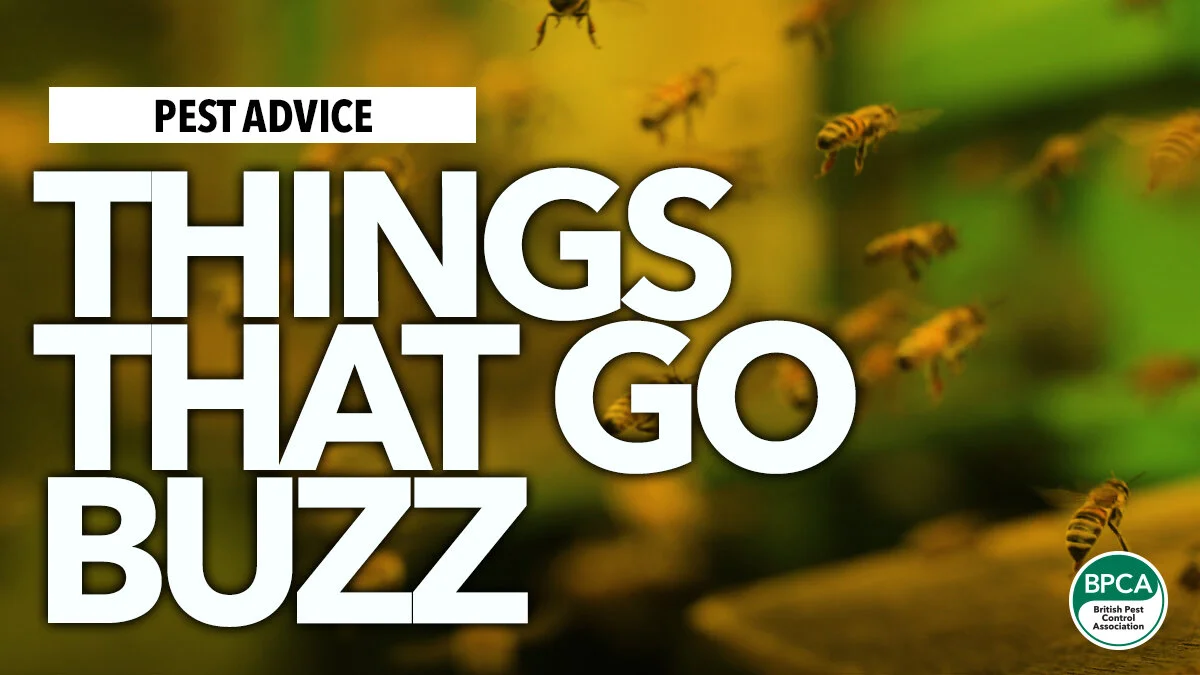Help! I have a Wasp’s Nest…
As summer approaches we will start to see more Bees and Wasps around, we have already had hundreds of calls this year and we are only in May! Nests are built and the presence of both types of insect can effect both home and work environments. it is important that you identify whether you have a Bee’s or Wasp Nest so we can advise you what to do next. The most noticeable differences between Wasps and Bees are that Wasps are more vivid in colouring and are bald and smooth whilst Bees have fluffy thoraxes.
The Bee’s Knees
There are two main types of Bees in the UK. The Bumble Bee is large and furry and easily distinguishable from the wasp. The Honey Bee is similar to the wasp in size and appearance however is much darker in colour and has a furry abdomen. Colonies of up to 50,000 can exist.
Bees can become an issue when they re-colonise in the summer. As a colony becomes too large for its nest the colony will divide and roughly half will leave and swarm, clustering elsewhere whilst scout bees search for a new nesting site. Common nesting sites can be cavity walls, chimneys, attics and other voids.
Buzz off Wasps
There are many different types of wasps in the UK. The German Wasp which is slightly larger and darker than the Common Wasp, the Hornet which is noticeably larger, up to two inches larger than the Common Wasp and rustier in colour. Finally, the Common Wasp itself.
Treating a Wasp Nest can be very dangerous. Wasps inside the nest will feel threatened and can often become very aggressive. This could cause them to sting you and others, as they defend their nest resulting in multiple stings. Unlike Bees, Wasps do not die after one sting, they can, and will, sting you quite a few times!
The first steps if you find a nest
If you experience any difficulties with bees or wasps swarming or nesting do not approach them - it is very important that you do not disrupt the nest. Whilst, particularly Bees, are friendly and will only sting when they feel threatened, either can be unpredictable and a small number of deaths occur in the UK each year from stings.
Head over to our Bee’s page to read more info and check out the links which will help you to identify whether you have a Bee or a Wasp Nest.
The next steps
If you have Wasp Nest then call our experienced team who can advise you what steps we can take next. At Healthguard our technicians are experts in the irradiation of Wasps and the protection of buildings from re-infestation so feel free to contact us if you encounter any issues.
For safe removal of Bees we recommend you contact the Tree Bee Society who specialise in safely removing and relocating bees. The BBKA website has further info to help you identify the type of Bee and a map displaying many local Bee Keepers who will be able to remove the swarm safely. Bees are very responsive to changes in their habitat - for every 10% increase in bee-friendly habitats, bee numbers increases by over a third!
If you have any questions at all please do not hesitate to call our friendly team who will be more than happy to offer further advice


